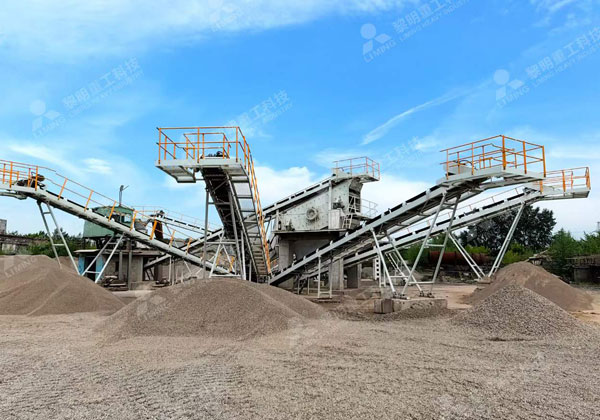The screening process is a crucial step in the gold ore mining industry, serving as a method to separate valuable minerals from waste rock, ensuring optimal efficiency and resource utilization. This process plays a pivotal role in the overall extraction of gold, contributing to the downstream processes such as milling, leaching, and refining. Here, we delve into the screening process for gold ore mining, detailing its key components and significance.

Ore Preparation:
The screening process begins with ore preparation, where raw materials are extracted from the earth and transported to the processing plant. Ore extracted from mines typically contains a mixture of valuable minerals (gold particles) and undesirable components (gangue). Prior to screening, the ore undergoes primary crushing to reduce its size for efficient processing.
Types of Screens:
Various types of screens are employed in the gold ore screening process, each designed to achieve specific separation objectives. Vibrating screens are commonly used, consisting of a mesh or perforated surface that classifies particles based on size. Trommel screens, which rotate and tumble the ore, are also employed for effective screening.
Screening Parameters:
Several parameters influence the screening process, including particle size, shape, and composition. The goal is to efficiently separate the gold-bearing particles from the gangue materials. Screens with different opening sizes or mesh configurations are utilized to classify the ore into various fractions.
Scalping and Classification:
The screening process typically involves two main stages: scalping and classification. Scalping removes oversize material, while classification separates the ore into different size fractions. This ensures that the downstream processes receive a consistent feed with the appropriate particle size distribution.
Efficiency and Throughput:
Efficiency and throughput are critical considerations in the screening process. Optimal screen design, including factors such as slope, amplitude, and frequency, influences the efficiency of particle separation. Balancing high throughput with accurate classification is essential for maximizing the yield of valuable minerals.
Water Usage and Environmental Impact:
Water is commonly used in the screening process to carry out the separation of particles. It is essential to manage water usage responsibly, considering both operational efficiency and environmental impact. Efforts are made to minimize water consumption and implement recycling systems to reduce the overall environmental footprint.
Maintenance and Equipment Reliability:
Regular maintenance of screening equipment is crucial to ensure its reliability and longevity. Equipment downtime can significantly impact the overall production efficiency. Monitoring and preventive maintenance practices are implemented to address wear and tear, reducing the risk of unscheduled shutdowns.
Automation and Technology:
Advancements in automation and technology have enhanced the screening process in gold ore mining. Automated systems can optimize screen settings, monitor performance in real-time, and provide data for continuous process improvement. This integration of technology contributes to increased efficiency and reduced operational costs.
Quality Control:
Quality control measures are implemented throughout the screening process to ensure that the final product meets the required specifications. Regular sampling and analysis help monitor the composition of the screened material, allowing for adjustments to optimize the extraction of gold.
The screening process in gold ore mining is a crucial step that influences the efficiency and success of downstream processes. From ore preparation to quality control, each stage requires careful consideration to achieve optimal results while minimizing environmental impact. Advances in technology and a focus on sustainability continue to shape and improve the screening process in the gold mining industry.
